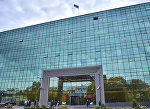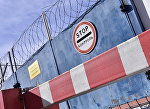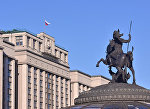MOSCOW, February 18 (RAPSI, Ingrid Burke) – The UK Serious Fraud Office launched criminal proceedings Monday against three former Barclays Bank employees based on allegations that they conspired to commit fraud between June 2005 and August 2007 in connection with the London Interbank Offered Rate (LIBOR) manipulation scandal.
A release issued by the Office states: “Criminal proceedings by the Serious Fraud Office have commenced today against three former employees at Barclays Bank Plc, Peter Charles Johnson, Jonathan James Mathew and Stylianos Contogoulas,” noting that the LIBOR investigation remains underway.
LIBOR is a benchmark interest rate established by the polling of a panel of representative London banks.
According to an information sheet posted by current LIBOR administrator, the IntercontinentalExchange Benchmark Administration (IBA), panel banks are asked the following question: “At what rate could you borrow funds, were you to do so by asking for and then accepting inter-bank offers in a reasonable market size just prior to 11 am?”
The panel banks include those with a significant presence in London. The time – 11am – was selected due to its position at the peak of the London business day, as well as the fact that it’s early enough to allow LIBOR users to work with daily rates for valuation processes shortly after their release each day at about 11:45 London time.
In calculating LIBOR, the highest and lowest 25% of submissions are removed, and the remaining submissions are averaged.
Responsibility for the administration of LIBOR was transferred from the British Bankers’ Association Libor Ltd. (BBALL) to IBA on February 1 of this year. IBA was established in July 2013 after an independent UK government committee was created in order to select a new LIBOR administrator.
In July 2012, the Serious Fraud Office announced its intention to launch an investigation into the manipulation of LIBOR.
As explained the following September in a speech by then-Managing Director of the Financial Services Authority, LIBOR had been marred by two key problems: “First, any complex bank has a myriad of different deals, particularly in the swaps market – which became more or less profitable depending on the rate of LIBOR. Traders whose bonuses depended on these deals had an interest in pushing LIBOR up or down, depending on the deal. They were allowed to do this freely with no oversight… The second problem was that, at the height of the crisis in 2008, nobody knew which banks were safe. The price a bank had to pay to borrow from another bank was an indicator of what banks thought of each other. Nobody wanted to be at the top of that list so, again, there was an incentive to lie and put in a lower figure.”
Wheatley, who led a large-scale review of LIBOR on behalf of the UK government, further explained that banks had been encouraged to make it appear as though their borrowing costs were lower than they actually were, as at that point individual submissions were published immediately.
Notably, the IBA will not publish individual results for three months following the date of submission. According to the IBA LIBOR information sheet: “This works in two ways: firstly, it makes it harder for banks to set their submissions purely in line with other panel banks rather than their own perceived funding costs; and secondly, it also protects banks from the negative signalling effects that their submissions might have on market perceptions of a bank’s financial viability. This credit-signalling or stigma-effect was one of the identified sources of banks’ internal conflict of interest, which led to attempted manipulation of the rate.”
Wheatley warned in his speech that the scandal was not isolated: “we are not talking about a few rogue individuals here, but a systemic problem.”
The Serious Fraud Office previously launched proceedings against former UBS and Citigroup trader Tom Hayes, who was charged with conspiracy to defraud in connection with the LIBOR investigation in June 2013, as well as former RP Martin Holdings Limited brokers Terry Farr and James Gilmour, who were similarly charged in July 2013.
The Office noted its collaboration with the UK Financial Conduct Authority and the US Justice Department in their respective investigations.


